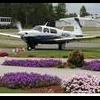Ditching at Night....are you prepared for it?
-
Members Online
- LBS
- Stealth Mooney
- Fly Boomer
- Bunti
- aviatoreb
- emillerslo
- Flyler
- M20F
- 201er
- BenP
- AndreiC
- Rocket_Driver
- Echo
- David P
- buddy
- Nico1
- Deb
- KSMooniac
- Quantum Blueberry
- N201MKTurbo
- 1980Mooney
- Bolter
- Mooney-Shiner
- Rsmithref
- LOCOLJ
- Jake@BevanAviation
- exM20K
- hubcap
- 201Mooniac
- Skyland
- Mister_Bevilaqua
- FADEC
- redbaron1982
- Guy123


Recommended Posts
Join the conversation
You can post now and register later. If you have an account, sign in now to post with your account.